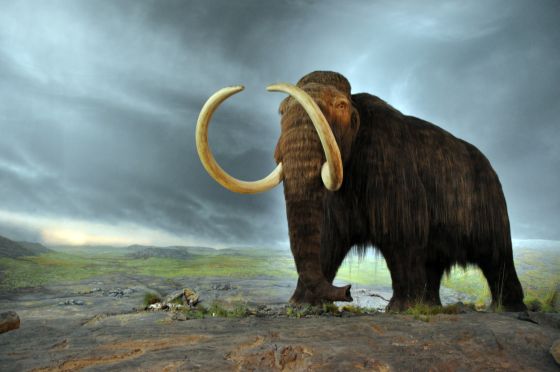In December, and again in February, at the Google Bus blockades in San Francisco, one thing struck me forcefully: the technology corporation employees waiting for their buses were all staring so intently at their phones that they apparently didn’t notice the unusual things going on around them until their buses were surrounded. Sometimes I feel like I’m living in a science-fiction novel, because my region is so afflicted with people who stare at the tiny screens in their hands on trains, in restaurants, while crossing the street, and too often while driving. San Francisco is, after all, where director Phil Kaufman set the 1978 remake of Invasion of the Body Snatchers, the movie wherein a ferny spore-spouting form of alien life colonizes human beings so that they become zombie-like figures.
In the movies, such colonization took place secretly, or by force, or both: it was a war, and (once upon a time) an allegory for the Cold War and a possible communist takeover. Today, however — Hypercapitalism Invades! — we not only choose to carry around those mobile devices, but pay corporations hefty monthly fees to do so. In return, we get to voluntarily join the great hive of people being in touch all the time, so much so that human nature seems in the process of being remade, with the young immersed in a kind of contact that makes solitude seem like polar ice, something that’s melting away.
We got phones, and then Smart Phones, and then Angry Birds and a million apps — and a golden opportunity to be tracked all the time thanks to the GPS devices in those phones. Your cell phone is the shackle that chains you to corporate America (and potentially to government surveillance as well) and like the ankle bracelets that prisoners wear, it’s your monitor. It connects you to the Internet and so to the brave new world that has such men as Larry Ellison and Mark Zuckerberg in it. That world — maybe not so brave after all — is the subject of Astra Taylor’s necessary, alarming, and exciting new book, The People’s Platform: Taking Back Power and Culture in the Digital Age.
The Internet arose with little regulation, little public decision-making, and a whole lot of fantasy about how it was going to make everyone powerful and how everything would be free. Free, as in unregulated and open, got confused with free, as in not getting paid, and somehow everyone from Facebook to Arianna Huffington created massively lucrative sites (based on advertising dollars) in which the people who made the content went unpaid. Just as Russia woke up with oil oligarchs spreading like mushrooms after a night’s heavy rain, so we woke up with new titans of the tech industry throwing their billionaire weight around. The Internet turns out to be a superb mechanism for consolidating money and power and control, even as it gives toys and minor voices to the rest of us.
As Taylor writes in her book, “The online sphere inspires incessant talk of gift economies and public-spiritedness and democracy, but commercialization and privatization and inequality lurk beneath the surface. This contradiction is captured in a single word: ‘open,’ a concept capacious enough to contain both the communal and capitalistic impulses central to Web 2.0.” And she goes on to discuss, “the tendency of open systems to amplify inequality — and new media thinkers’ glib disregard for this fundamental characteristic.” Part of what makes her book exceptional, in fact, is its breadth. It reviews much of the existing critique of the Internet and connects the critiques of specific aspects of it into an overview of how a phenomenon supposed to be wildly democratic has become wildly not that way at all.
And at a certain juncture, she turns to gender. Though far from the only weak point of the Internet as an egalitarian space — after all, there’s privacy (lack of), the environment (massive server farms), and economics (tax cheats, “content providers” like musicians fleeced) — gender politics, as she shows in today’s post adapted from her book, is one of the most spectacular problems online. Let’s imagine this as science fiction: a group of humans apparently dissatisfied with how things were going on Earth — where women were increasing their rights, representation, and participation — left our orbit and started their own society on their own planet. The new planet wasn’t far away or hard to get to (if you could afford the technology): it was called the Internet. We all know it by name; we all visit it; but we don’t name the society that dominates it much.
Taylor does: the dominant society, celebrating itself and pretty much silencing everyone else, makes the Internet bear a striking resemblance to Congress in 1850 or a gentlemen’s club (minus any gentleness). It’s a gated community, and as Taylor describes today, the security detail is ferocious, patrolling its borders by trolling and threatening dissident voices, and just having a female name or being identified as female is enough to become a target of hate and threats.
Early this year, a few essays were published on Internet misogyny that were so compelling I thought 2014 might be the year we revisit these online persecutions, the way that we revisited rape in 2013, thanks to the Steubenville and New Delhi assault cases of late 2012. But the subject hasn’t (yet) quite caught fire, and so not much gets said and less gets done about this dynamic new machinery for privileging male and silencing female voices. Which is why we need to keep examining and discussing this, as well as the other problems of the Internet. And why you need to read Astra Taylor’s book. This excerpt is part of her diagnosis of the problems; the book ends with ideas about a cure. Rebecca Solnit
Open systems and glass ceilings
The disappearing woman and life on the internet
By Astra TaylorThe Web is regularly hailed for its “openness” and that’s where the confusion begins, since “open” in no way means “equal.” While the Internet may create space for many voices, it also reflects and often amplifies real-world inequities in striking ways.
An elaborate system organized around hubs and links, the Web has a surprising degree of inequality built into its very architecture. Its traffic, for instance, tends to be distributed according to “power laws,” which follow what’s known as the 80/20 rule — 80% of a desirable resource goes to 20% of the population.
In fact, as anyone knows who has followed the histories of Google, Apple, Amazon, and Facebook, now among the biggest companies in the world, the Web is increasingly a winner-take-all, rich-get-richer sort of place, which means the disparate percentages in those power laws are only likely to look uglier over time.




